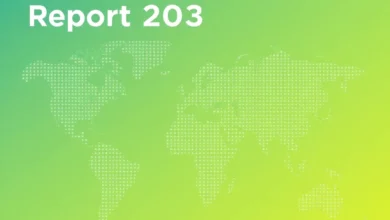Capturing the Climate Opportunity in Insurance

The insurance industry is facing an unprecedented challenge and opportunity as the realities of climate change reshape risks, markets, and the very nature of coverage. As extreme weather events become more frequent and severe, insurers are being called upon not only to manage and transfer risk but also to drive innovation, resilience, and the global transition to a low-carbon economy. The climate crisis, once seen primarily as a threat, is now increasingly recognized as a catalyst for growth and transformation within the sector.
Insuring the Net-Zero Transition
A central opportunity for insurers lies in supporting the world’s transition to net-zero emissions. Across high-emitting sectors, decarbonization is accelerating, with investments in renewable energy, green infrastructure, and emerging climate technologies growing rapidly. Annual global capital expenditures in top climate technologies could reach over $800 billion by 2030, translating into billions in potential insurance premiums tied to these projects.
Insurers can play a pivotal role by offering products that cover the construction, operation, and maintenance of renewable energy assets, carbon capture facilities, and other green technologies. These solutions not only protect investments but also help de-risk new ventures, encouraging further capital flows into climate-positive projects. By developing specialized underwriting expertise for net-zero technologies, insurers can position themselves as essential partners in the energy transition.
Innovating Risk Transfer for Physical Climate Risks
The increase in climate-driven catastrophes—such as wildfires, floods, hurricanes, and droughts—has made traditional coverage models less sustainable in many regions. Insurers are responding by creating new risk transfer solutions tailored to the unique challenges posed by climate change. One area of rapid innovation is parametric insurance, which pays out based on predefined triggers (like rainfall amounts or wind speeds) rather than traditional claims assessments. This approach enables faster payouts and can be more affordable and accessible, especially in vulnerable communities and developing markets.
Another key trend is the use of advanced data analytics and environmental monitoring to refine risk models and pricing. By integrating real-time climate and environmental data, insurers can more accurately assess risk, set premiums, and encourage policyholders to adopt risk-reducing measures. For example, offering premium discounts for installing flood barriers or fire-resistant materials incentivizes adaptation and resilience at the household and business level.
Bridging the Insurance Protection Gap
Despite these innovations, a growing “insurance protection gap” threatens to leave more people and assets exposed to climate risks. As the cost and frequency of disasters rise, some insurers have pulled back from high-risk markets, making coverage unaffordable or unavailable for millions. In the U.S. alone, nearly two million home insurance contracts were denied renewal in recent years, with states like California experiencing acute challenges due to wildfire risk.
To address this gap, insurers are exploring new business models and partnerships. Public-private collaborations, where governments and insurers share risk and pool resources, are gaining traction for large-scale adaptation projects such as flood defenses and resilient infrastructure. These partnerships can help spread risk, lower costs, and ensure that vulnerable communities remain protected.
Driving Climate Product Innovation
Leading insurers are moving beyond traditional indemnity coverage to develop products that actively support climate mitigation and adaptation. This includes policies that incentivize low-carbon choices, such as discounts for electric vehicle owners or for companies that reduce their carbon footprint. Some insurers are investing in green bonds and sustainable assets, channeling capital toward projects that advance climate goals.
The claims process itself is also evolving, with insurers seeking to decarbonize repairs and replacements by favoring sustainable materials and processes. Risk advisory services are expanding, helping clients understand their climate exposures and develop strategies for mitigation and resilience.
Focusing on Adaptation and Resilience
As the world faces the likelihood of surpassing key climate thresholds, adaptation is becoming as important as mitigation. Insurers are uniquely positioned to help societies and businesses adapt, not only through risk transfer but also by providing expertise, data, and incentives for proactive risk management. By highlighting areas most in need of adaptation—such as flood-prone regions or heat-vulnerable cities—insurers can guide investments in resilient infrastructure and community preparedness.
The Path Forward: A Catalyst for Change
The climate crisis presents profound risks, but also a generational opportunity for the insurance industry to redefine its purpose and value. By embracing innovation, forging new partnerships, and expanding their role beyond traditional risk transfer, insurers can help close the protection gap, accelerate the net-zero transition, and build more resilient societies.
The winners in this new era will be those who move boldly—investing in climate-focused solutions, leveraging technology, and aligning their strategies with the urgent needs of a warming world. In doing so, insurers will not only protect their own future but also play a vital role in safeguarding the planet for generations to come.




